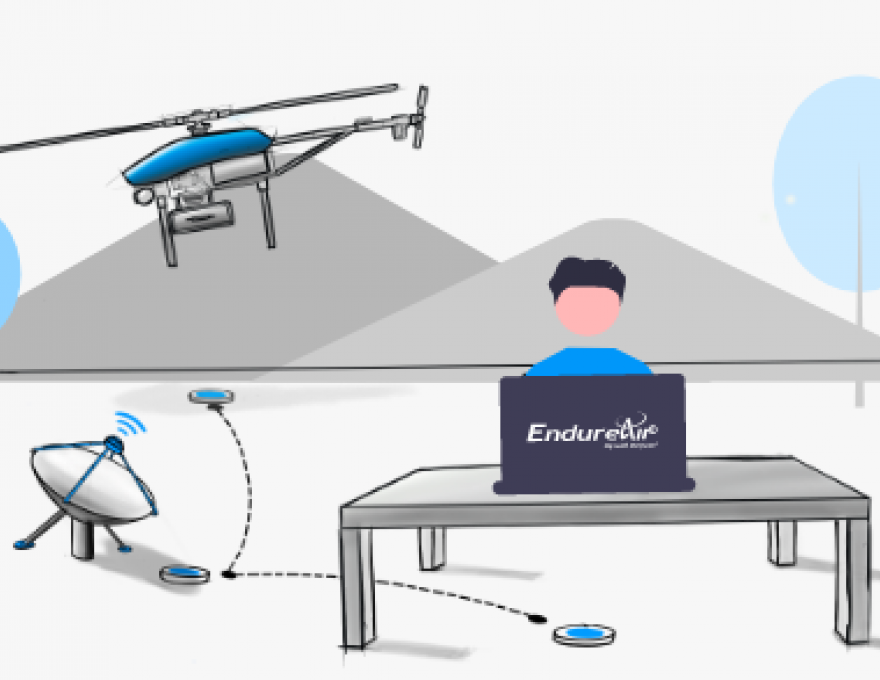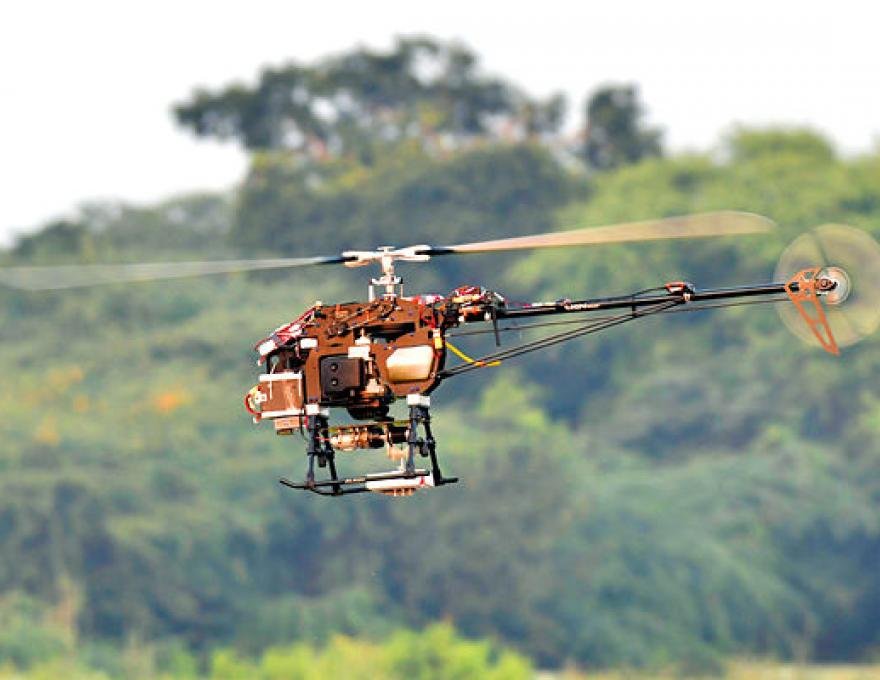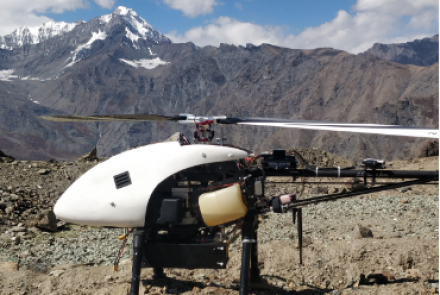EndureAir, an IIT-Kanpur-incubated startup, used smaller drones to fly very close to the dams that were damaged in Uttarakhand. They created very high-quality videos of the whole structure to help engineers obtain a clear perspective of the extent of the damage.
On 7 February 2021, Uttarakhand suffered a devastating natural disaster when a portion of a glacier broke off in Joshimath, Chamoli district, causing a glacial lake outburst flood, according to the Associated Press news agency. The deluge killed over 30 people, washed away an entire village, destroyed livelihoods, cut of remote villages and damaged two power projects — NTPC’s Tapovan-Vishnugad hydel project and the Rishi Ganga Hydel Project. Amid all this tragedy, the National Disaster Relief Force (NDRF) called upon startups like EndureAir Systems, an IIT-Kanpur-incubated company, to assist in search and rescue operations in Joshimath. Using their fleet of indigenously developed advanced drones, the EndureAir team performed search operations in the disaster-hit area to look for survivors. They also inspected the hydel power project sites to assess the extensive damage done by the flood.
This is the first time in India that startups were called to assist first responders to a natural disaster. This endeavour not only benefited the rescue operations but also gave valuable feedback to startups like EndureAir on how to further adapt the technologies to make them more useful and user-friendly for disaster management.
Dr Abhishek (no last name), an associate professor at IIT-Kanpur and co-founder of EndureAir Systems, talks about how they assisted the NDRF, the challenges they endured and what they learnt through this endeavour.
The Call That Came Too Late
“Our team landed in Joshimath only on 10 February. A day before, our team started preparing for the task ahead, but there was initially some confusion about whether we were needed or not. I think the NDRF wasn’t fully aware of the extent of technology available with us and thus unaware of how to best use expertise from EndureAir and other such startups. But, on the initiative of AGNIi – Accelerating Growth of New India’s Innovations – a programme of the Office of the Principal Scientific Adviser to the Government of India, the NDRF gave us the green signal and we were airlifted the next day,” says Dr Abhishek.
Just a month prior to the disaster, EndureAir did a demonstration for the NDRF, where they showcased their high-endurance unmanned helicopter drone called Vibhram, which can carry a 5kg payload and fly for 80 minutes. The drone can play a dual role in surveying a disaster area and reach any survivor who may need food, water or as a communication device.
“I think nobody in India has developed a drone that can fly this long, carry such payloads and meet both requirements at the same time. Meanwhile, our smaller drones weighing 100-200 gms can be used for surveillance. On the ground, we brought in a lot of our smaller drones because we reached ground zero at a much later stage when the water had receded. The need to reach survivors was no longer there except for those stuck inside tunnels in Tapovan and other areas. Many people were reportedly stuck inside these tunnels and it was tough for the authorities to figure out if there were any survivors left. But our team was not allowed to enter the tunnel due to the misadventures of some other startup that had gone before us. Also, by that time, there was no hope of finding any survivors,” he notes.
One of the common themes running through our conversation was how the NDRF should have called them earlier with a proper briefing on how to proceed.
“For example, we found that flying a small drone inside an enclosed area where there is no GPS signal is very hard to manoeuver. These drones often crash into walls. But at IIT Kanpur, we had already developed GPS-denied navigation systems. If we were given the right kind of support and instruction, we could’ve been ready with solutions for immediate use. We can create sensor networks there that can be used to navigate our drones autonomously in enclosed areas and go deep inside these tunnels. Similarly, when we joined the rescue operations there were no more survivors to be found. If we were called earlier, maybe we could have garnered some positive results,” claims Dr Abhishek.
Lessons For The Future
Although their search for survivors yielded limited success, EndureAir used smaller drones to fly very close to the dams that were damaged. They created very high-quality videos of the whole structure to help engineers obtain a clear perspective of the extent of the damage.
“We could give the authorities a very detailed presentation on the damage caused to the hydropower plants and river banks there. Our drones flew very close to the damaged equipment, took very clear shots, videos and gave the authorities a proper assessment of the damage done with our Micro-Drones (installed with a high-resolution digital camera with onboard 4K recording and long-range analogue video transmission capability up to 5km LOS) and Surveillance Quadcopter Drones (installed with a 3-axis stabilized 4K resolution camera and backed by 30 minute endurance with camera payload),” claims Dr Abhishek.
Having said that, this was the first time in India when startups were called to assist first responders in the event of a natural disaster. Every natural disaster presents its own set of challenges, but by involving startups on the cutting edge of indigenous technology, the government allows them to get the big picture at the early stage.
“In exposing our drones to a crisis, we received the right sort of inputs on things we needed to improve. Without such exposure, it wouldn’t have been possible. For example, they were happy with the 5 kg payload capability of our Vibhram fully autonomous helicopter UAV, but also expressed a need for drones that could carry 10 kg payloads. We have a system that can lift 10 kgs and fly for 2 hours, but it hasn’t been fully developed. It’s still in the prototype and testing stage, although we will keep their request in mind,” he says.
Apart from these, EndureAir is also developing some unique high-speed systems which could be used for the supply of emergency services to remote regions. It’s a very simple and reliable design and can even be operated in populated areas.
“This can reach speeds of 120 kmph. We are also in the process of developing a bigger version of the same 5 kg payload carrying drone called the Quadrotor Bi-plane Tailsitter UAV that can carry 10-20 kg payloads over longer distances. This can be relevant for transporting vaccines or other medical and healthcare equipment to remote areas,” he adds.
Key learnings for companies
Following their work with the NDRF, EndureAir submitted a detailed report to AGNIi laying out areas to improve on and how better coordination with the government can be achieved.
Among the list of recommendations, two key points stood out.
One dealt with “greater focus on increasing the ease of operations with their drones”. They felt that the drones in the current version can only be “operated by someone with technical background” and “to make it useful for the NDRF with minimal training will require some more development”. Secondly, the “Drona maps faced issues with transmitting the data back to their main server where the computing for 3D map stitching takes place”.
This delayed their operations significantly. Now they will “come up with a solution to not depend on mobile networks for their operations”.
Meanwhile, EndureAir is convinced that had they been called earlier, they could have proven to be much more useful in assisting with search, relief and rescue operations.
“Our gasoline helicopter (Vibhram) which can lift 5kg for 1 hour could have been useful for multiple missions. The task of delivering emergency supplies to the villagers on the opposite mountain with no contact to the mainland could have been very easily achieved with this drone. This particular task is currently being carried by full size helicopter. As this is the only line of sight operation, the whole village could have gotten supplies at the Tapovan site within 3hrs. The same task was performed by ground teams after building the trolley bridge, which took 4 days to construct. Also, in building those trolley bridges, ropes are needed to be transferred to the other side of the river, which can be done with heavy lift drones,” the company notes in its report to AGNIi.
Should the government engage more startups? “Absolutely,” notes Dr Abhishek. “As a startup, you’re a problem solver. When you’re at ground zero, the challenges are very different from what you may imagine in your offices. This was a great opportunity and an eye-opener as well. It helped us understand what we needed to work on in our research and development process,” he adds.
Looking Ahead
Incorporated in 2018, the co-founders at the IIT-Kanpur incubated startup had been engaged in drone development for quite some time, although it really picked up in 2019. Initially, they were hoping that an existing established company would come forward, test their technology and commercialise it. However, when it didn’t happen, the co-founders realised that if they wanted people to use their technology in the real world, they must do it themselves.
“Development of these drones for the market has been happening for the past year and a half. We sold our first drone last week. But in the future, our sincere hope is that next time government agencies like the NDRF call us, we will be better prepared,” says Dr Abhishek.
- Kalyanpur, Kanpur, Uttar Pradesh
- sales@endureair.tech
- 8960622585
- https://endureair.tech/







Add new comment